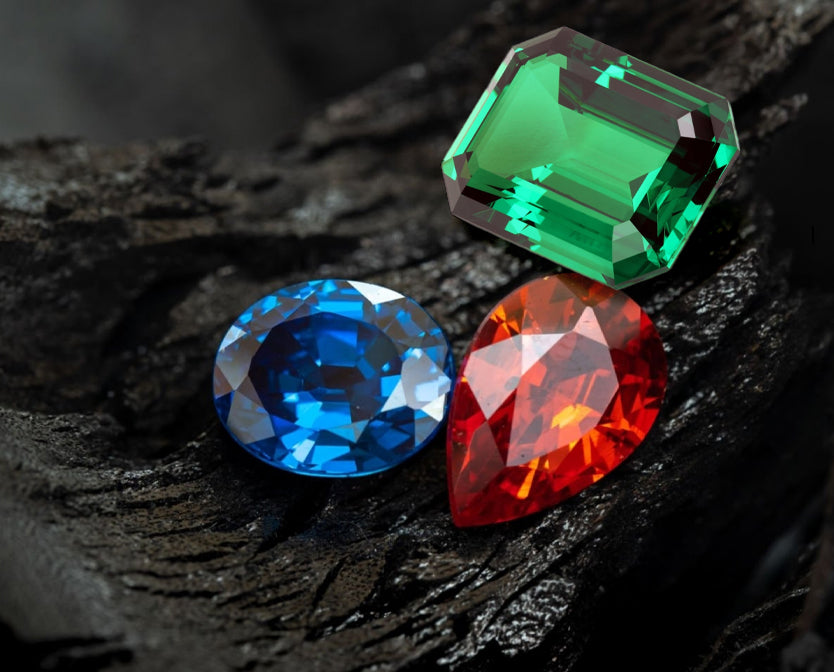Jewelry Education
Returns & Refunds
Privacy & Security
Shipping & Delivery
Payment
Helpful Information
About Javda

Gemstone Education
Explore the Beauty and Quality of Your Favorite Gemstones
Learn about the fascinating world of gemstones—from dazzling color varieties to clarity grades and expert cuts. Whether it's sapphire, ruby, emerald, or topaz, each gemstone tells its own story through its characteristics and rarity.
Key Factors That Define Gemstone Quality
Similar to diamonds, gemstones are assessed by multiple quality factors. These influence their appearance, rarity, and price.
1. Color

Color is one of the most defining features of a gemstone. It includes three core components:
- Hue: The dominant color or shade (e.g., blue, green).
- Tone: Refers to how light or dark the color appears.
- Saturation: Indicates the intensity or purity of color. Highly saturated gemstones appear vivid and valuable.
Sapphires, for example, come in blue, pink, yellow, and even green hues. Treatments can enhance color but may require extra care.
2. Clarity

Clarity refers to the presence of internal or external inclusions. These natural marks are often invisible to the naked eye and don’t always affect value.
Clarity types by gemstone group:
- Type I: Generally eye-clean (e.g., aquamarine, blue topaz, tanzanite).
- Type II: May contain noticeable inclusions (e.g., ruby, garnet, amethyst).
- Type III: Commonly included (e.g., emerald, red tourmaline).

Some inclusions are viewed as unique identifiers or “birthmarks” and may even add to a gem’s appeal.
3. Carat Weight and Rarity

Carat measures gemstone weight (1 carat = 0.2 grams). Size perception can vary due to density. For example, a one-carat sapphire may appear smaller than a one-carat quartz.
Rare gemstones like tsavorite, rubies, and large emeralds become exponentially more valuable with size. In contrast, stones like amethyst and citrine remain fairly affordable even at higher carat weights.
4. Cut and Brilliance

The cut enhances a gemstone's natural brilliance. A skilled gem cutter balances precision and artistry to maximize light reflection and color display.
Common shapes include round, oval, marquise, and emerald cuts. Well-cut gems exhibit symmetry, proportion, and optimal light return.
Frequently Asked Questions
What gemstone color is most valuable?
Deep, rich hues with high saturation and minimal tone variation are typically the most valuable.
Which gemstone has the fewest inclusions?
Gemstones like aquamarine, zircon, and blue topaz often have very few inclusions and are classified as Type I clarity.
Can gemstone treatments affect value?
Yes, while treatments enhance appearance, untreated or natural stones are usually more valuable in the market.
Does carat affect value more than cut?
Both matter, but for many gemstones, cut significantly influences beauty and market value more than carat alone.

 Round
Round Radiant
Radiant Princess
Princess Asscher
Asscher Cushion
Cushion Marquise
Marquise Emerald
Emerald Heart
Heart Oval
Oval Pear
Pear Start With An Earth Mined Diamond
Start With An Earth Mined Diamond Start With A Lab-Grown Diamond
Start With A Lab-Grown Diamond Start With A Setting
Start With A Setting 
 Start With A Setting
Start With A Setting Start With An Earth Mined Diamond
Start With An Earth Mined Diamond Start With A Lab-Grown Diamond
Start With A Lab-Grown Diamond Halo
Halo Solitaire
Solitaire Three Stone
Three Stone Vintage
Vintage Multirow
Multirow Pave
Pave Rose Gold
Rose Gold Yellow Gold
Yellow Gold White Gold
White Gold Platinum
Platinum Round
Round Princess
Princess Cushion
Cushion Oval
Oval Emerald
Emerald Marquise
Marquise Pear
Pear Radiant
Radiant Heart
Heart Asscher
Asscher
 Pendants
Pendants Earrings
Earrings